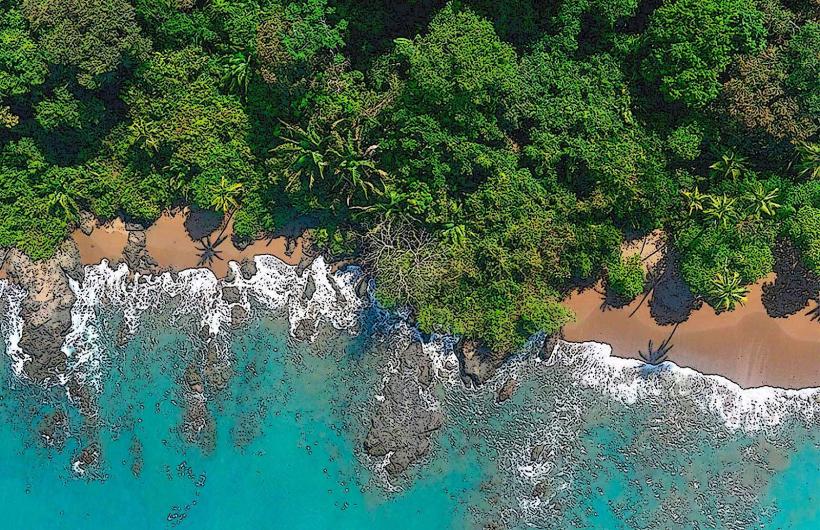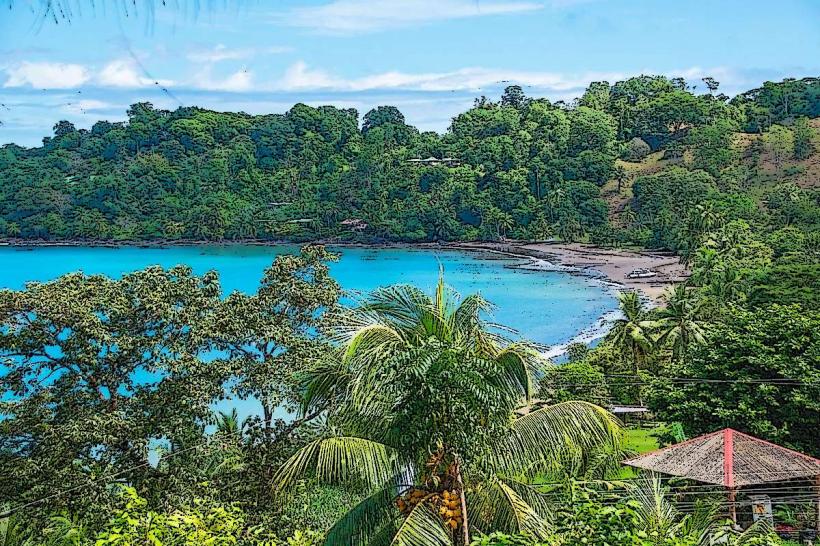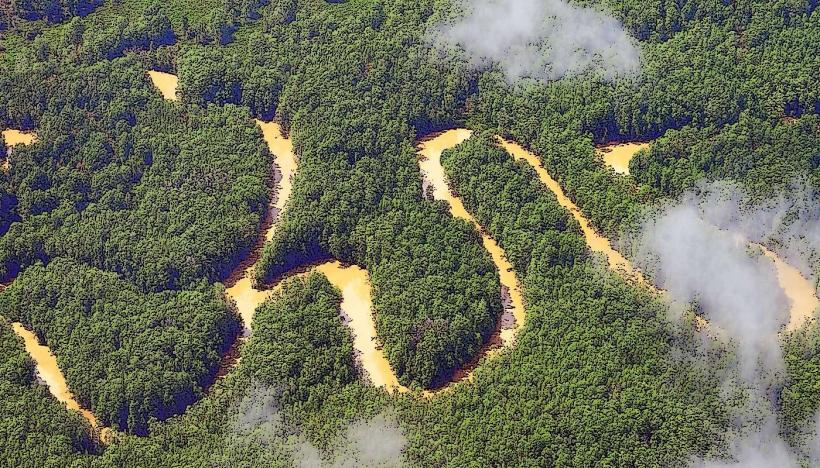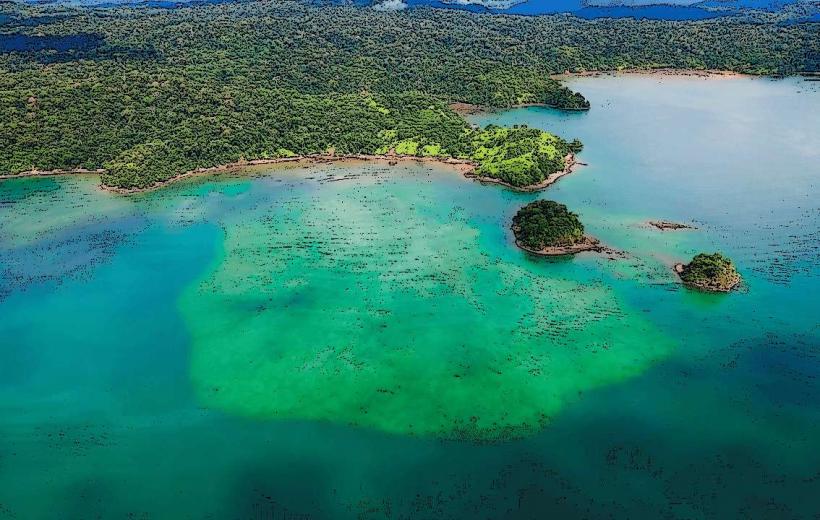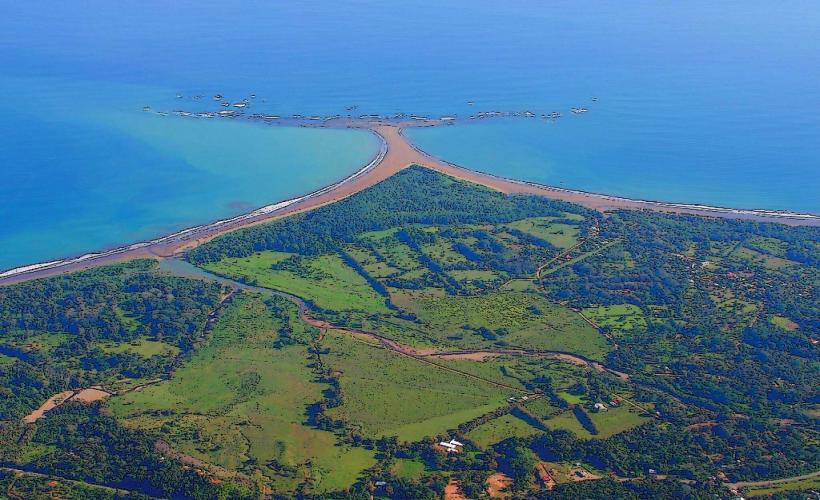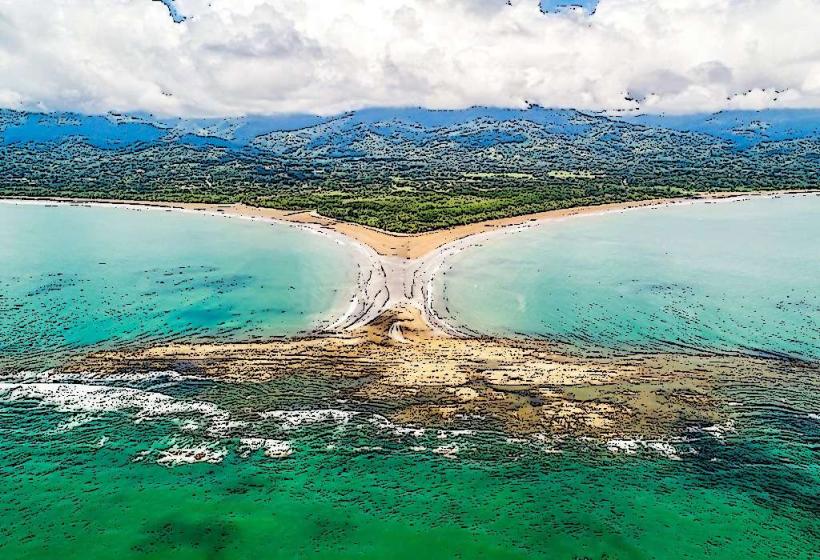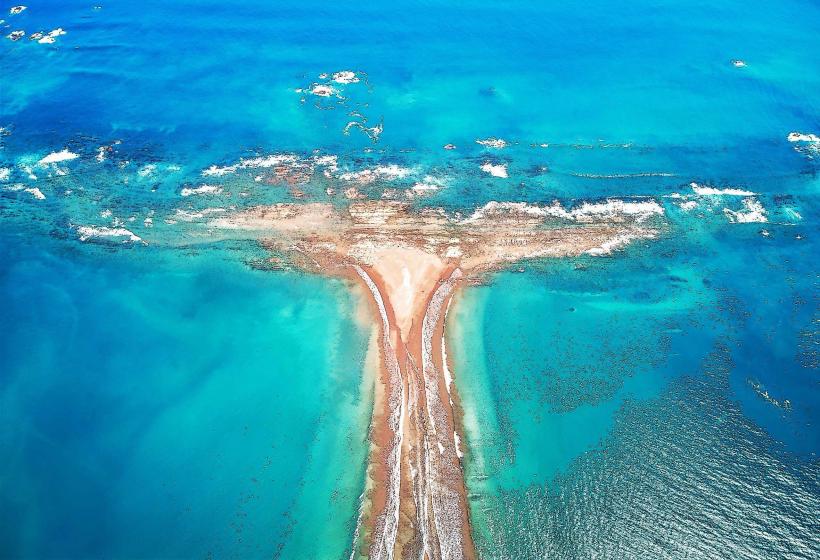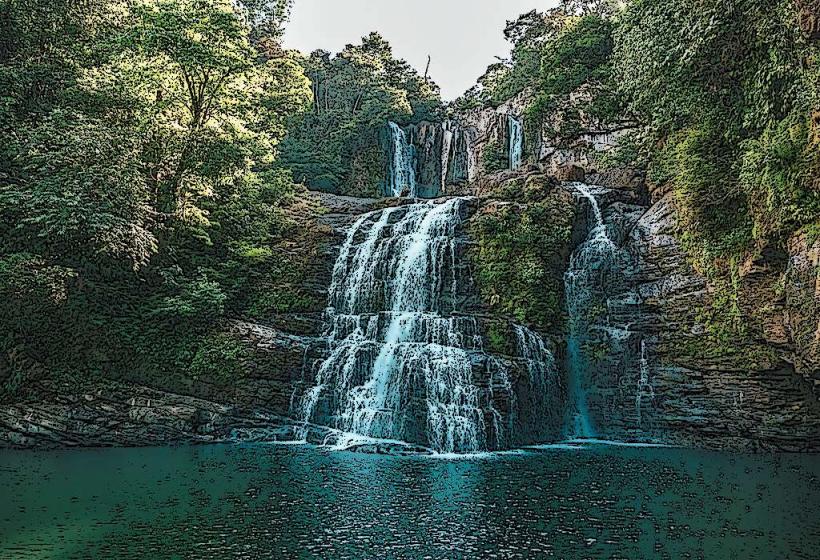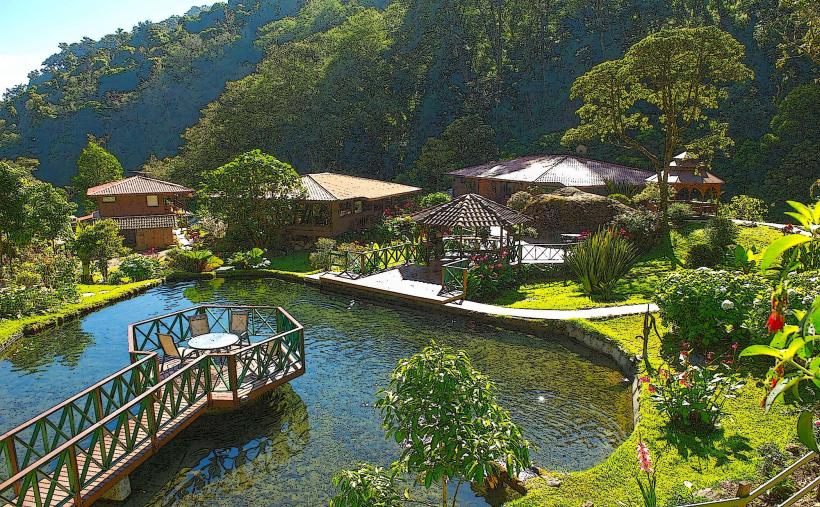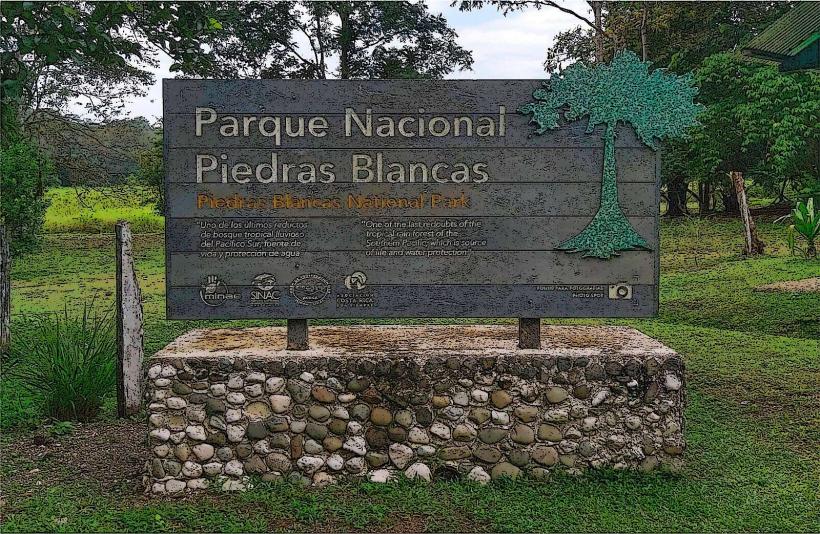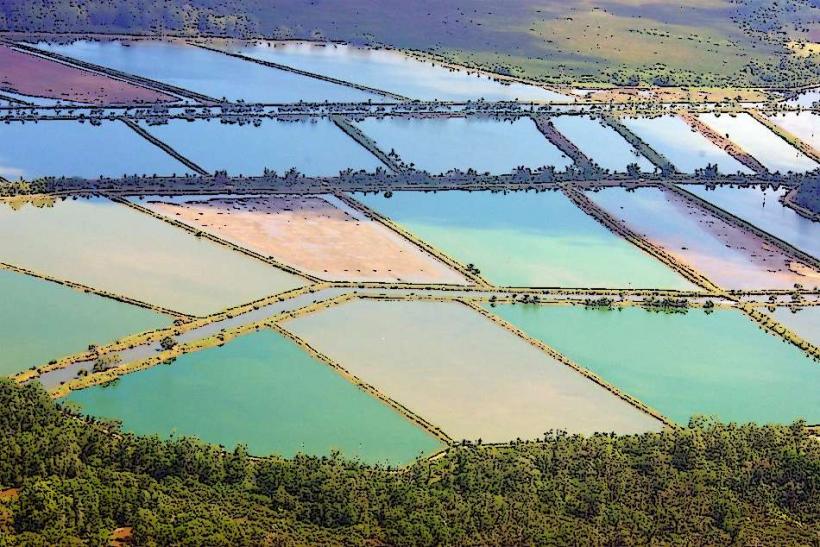Information
Landmark: Hacienda Barú National Wildlife RefugeCity: Zona Sur
Country: Costa Rica
Continent: North America
Hacienda Barú National Wildlife Refuge is a private wildlife reserve located on the Pacific coast of Costa Rica, specifically in the Southern Zone near the town of Dominical in Puntarenas Province. This refuge is a vital part of Costa Rica's extensive network of protected areas and offers a unique blend of tropical rainforest, coastal habitats, and diverse wildlife. It is a prime destination for ecotourism, birdwatching, and wildlife observation.
Location and Access
- Location: Hacienda Barú is situated along the Pacific coastline, near the town of Dominical in Puntarenas Province, approximately 30 km (18 miles) south of Quepos and the Manuel Antonio National Park. It lies on the border of Ballena National Marine Park and is easily accessible by car.
- Geographic Coordinates: 9.191° N latitude, 83.730° W longitude.
- Access: The refuge is accessible from the nearby towns of Dominical and Uvita. Visitors can travel by road from San José, which is about 3.5 to 4 hours away by car. Dominical is a popular destination for surfers and nature lovers and serves as a gateway to the wildlife refuge.
History and Establishment
- Foundation: Hacienda Barú was founded in the late 1980s by Pablo Saborío, a Costa Rican conservationist. Initially a working farm and cattle ranch, the property was gradually transformed into a private wildlife refuge. The transition began when Saborío realized the area's importance as a habitat for numerous species of flora and fauna.
- Conservation Efforts: The refuge was established with the goal of preserving the biodiversity of the area while promoting sustainable ecotourism. Hacienda Barú has since become an essential part of Costa Rica's conservation landscape, contributing to efforts to protect wildlife and educate the public about sustainable practices.
Ecological Significance
Hacienda Barú is located in one of the most biologically rich regions of Costa Rica, where a wide range of ecosystems, from tropical rainforests to coastal habitats, coexist. The refuge provides a sanctuary for a diverse variety of plant and animal species.
- Habitats: The refuge encompasses multiple ecosystems, including:
- Tropical Wet Forest: Dense rainforest areas, home to a variety of plant and animal species.
- Mangroves and Wetlands: These coastal habitats provide critical nesting sites for various species of birds and marine life.
- Coastal Areas: The refuge also includes coastal habitats with beaches and tidal flats, where marine animals, including sea turtles, can be found.
Flora and Fauna
- Biodiversity: Hacienda Barú is a biodiversity hotspot, home to over 300 species of birds, 150 species of mammals, 100 species of amphibians and reptiles, and countless species of plants, including numerous orchids, palms, and tropical trees.
Key Species
Birdlife: The refuge is a birdwatching paradise, offering the chance to see species such as:
- Scarlet Macaw
- Great Curassow
- Toucans
- Brown Pelican
- King Vulture
- White-fronted Parrot
- Rufous-tailed Hummingbird
Mammals: Visitors may encounter a variety of mammals, including:
- Howler Monkeys
- White-faced Capuchin Monkeys
- Spider Monkeys
- Agoutis
- Pumas (though rarely seen)
- Coatis
- Sloths
- Bats
Reptiles and Amphibians: The refuge also houses a variety of reptiles and amphibians, such as:
- Iguanas
- Glass Frogs
- Green Iguanas
- American Crocodiles (along nearby rivers and estuaries)
Marine Life: Hacienda Barú is near the Ballena National Marine Park, a protected marine area where visitors can spot:
- Humpback Whales (from December to April)
- Dolphins
- Sea Turtles (nesting on nearby beaches)
Key Features and Attractions
Wildlife Watching: Hacienda Barú is a great place for wildlife watching, especially for birdwatching. With its wide range of species, the refuge attracts nature enthusiasts and photographers. Guides can help spot and identify species, providing insights into the ecosystems and animal behaviors.
Hiking Trails: The refuge has several well-maintained hiking trails that take visitors through various habitats, including rainforest, wetlands, and coastal areas. The trails vary in difficulty, making them accessible to a range of visitors, from beginners to more experienced hikers.
- Mangrove Trail: A short, accessible trail that takes visitors through the mangrove ecosystem, home to crabs, birds, and various reptiles.
- Waterfall Trail: A more challenging trail that leads to a waterfall, where visitors can swim and enjoy the surrounding forest.
- Forest Trails: Various other trails explore the rainforest, where visitors can spot wildlife such as monkeys, sloths, and exotic birds.
Guided Tours: The refuge offers guided tours led by knowledgeable naturalists who provide insights into the local flora and fauna. These tours include birdwatching walks, wildlife spotting, and educational hikes.
- Night Tours: Night tours are also available, providing the opportunity to observe nocturnal animals such as frogs, bats, and night birds.
Beach Access: Hacienda Barú offers access to a pristine beach along the Pacific coast. The beach is relatively quiet and serves as a nesting site for sea turtles. It’s also an excellent location for swimming, surfing, and sunbathing.
Conservation and Sustainability
- Private Reserve: Hacienda Barú is a private reserve focused on the conservation of local ecosystems. The reserve operates on a sustainable model, combining tourism with conservation efforts. Proceeds from entrance fees and guided tours support conservation programs, including habitat restoration and wildlife protection.
- Education and Awareness: The refuge plays an important role in educating visitors about the importance of conservation and the fragile ecosystems of the region. It emphasizes the need for sustainable tourism practices and environmental responsibility.
Best Time to Visit
- Dry Season (December to April): The best time to visit Hacienda Barú is during Costa Rica's dry season, from December to April. This is when the weather is sunny, and wildlife is most active. However, it can get busy during this time, so it’s a good idea to plan in advance.
- Rainy Season (May to November): The rainy season, from May to November, brings lush greenery and vibrant plant life, but visitors should be prepared for rain showers. The rainy season can be a great time for fewer crowds, but some of the trails may become slippery.
Visitor Information
- Entrance Fees: There is an entrance fee to visit Hacienda Barú, and additional fees may apply for guided tours. The fees help support the refuge’s conservation programs.
- Accommodation: While the refuge itself does not offer overnight accommodations, there are many eco-lodges and hotels in the nearby towns of Dominical and Uvita, ranging from budget to luxury options. Many of these accommodations offer packages that include guided tours of the refuge.
- Facilities: The refuge offers basic visitor facilities, including a visitor center, restrooms, and a small gift shop where visitors can purchase souvenirs and learn more about local conservation efforts.
Conclusion
Hacienda Barú National Wildlife Refuge is a hidden gem in Costa Rica, offering an unparalleled opportunity to experience the country’s rich biodiversity in a protected and natural environment. Whether you are interested in birdwatching, wildlife observation, hiking, or ecotourism, Hacienda Barú provides a diverse range of experiences. Its commitment to conservation and sustainability makes it a valuable destination for nature lovers and those looking to support responsible tourism practices. With its breathtaking landscapes, vibrant ecosystems, and abundant wildlife, Hacienda Barú is a must-visit for anyone traveling to Costa Rica’s southern Pacific region.

